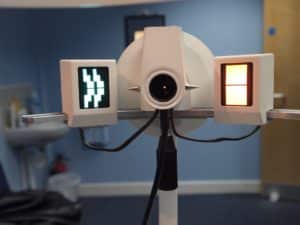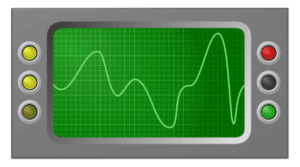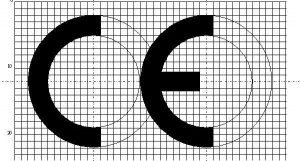MEDICAL DEVICE REGULATION (EU) 2017/745
Are you designing or manufacturing medical devices for Europe? Do you need to certify your medical devices and affix CE mark on them? Your products shall comply with new European regulation: Regulation (EU) 2017/745. Since previous medical device directives (90/385/EEC and 93/42/EEC) expired, fulfil new medical device regulation. This new regulation is known shortly MDR EU. On this page you will find essential requirements of the MDR EU.
Do you want to ask any question about new Medical Device Regulation (EU) 2017/745?
What is Medical Device Regulation (EU) 2017/745?
Medical Device Regulation (MDR) EU 2017/745 is a product regulation published by European Parliament. It is for regulating medical devices that are marketed in Europe. Protection of health for patients and users of medical devices are aimed with the regulation. MDR EU 2017/745 explains the requirements of medical devices and related parties.

What does medical device mean?
As given on the definitions article of the regulation:
‘medical device’ means any instrument, apparatus, appliance, software, implant, reagent, material or other article intended by the manufacturer to be used, alone or in combination, for human beings for one or more of the following specific medical purposes:
* diagnosis, prevention, monitoring, prediction, prognosis, treatment or alleviation of disease,
* diagnosis, monitoring, treatment, alleviation of, or compensation for, an injury or disability,
* investigation, replacement or modification of the anatomy or of a physiological or pathological process or state,
* providing information by means of in vitro examination of specimens derived from the human body, including organ, blood and tissue donations,
and which does not achieve its principal intended action by pharmacological, immunological or metabolic means, in or on the human body, but which may be assisted in its function by such means.
The following products shall also be deemed to be medical devices:
* devices for the control or support of conception;
* products specifically intended for the cleaning, disinfection or sterilisation of devices as referred to in Article 1(4) and of those referred to in the first paragraph of this point.
Before diving into the regulation check the definitions to understand what does implantable device, invasive device, implantable device, compatibility, manufacturer, authorised representative, importer, distributor, economic operator, notified body and conformity assessment mean.

What are the classes of medical devices? ‘authorised representative’?
There are different types or classes of medical devices. MDR EU 2017/745 classifies the medical devices into four classes: Class I, Class IIa, Class IIb and Class III. On Annex VIII, classification rules are explained in detail. For classification, duration of use is one the parameters. There are three types of duration of use:
| Duration of Use Category | Duration |
| Transient | continuous use for less than 60 minutes |
| Short term | continuous use for between 60 minutes and 30 days |
| Long term | continuous use for more than 30 days |
There are 22 different rules to define the classes of medical devices:
| Rule No | Device Type | Rule | ||||||||||||||||||
| 1 | Non-Invasive Devices | All non-invasive devices are classified as class I, unless one of the rules set out hereinafter applies. | ||||||||||||||||||
| 2 |
Non-Invasive Devices |
All non-invasive devices intended for channelling or storing blood, body liquids, cells or tissues, liquids or gases for the purpose of eventual infusion, administration or introduction into the body are classified as class IIa:
In all other cases, such devices are classified as class I. |
||||||||||||||||||
| 3 |
Non-Invasive Devices |
All non-invasive devices intended for modifying the biological or chemical composition of human tissues or cells, blood, other body liquids or other liquids intended for implantation or administration into the body are classified as class IIb, unless the treatment for which the device is used consists of filtration, centrifugation or exchanges of gas, heat, in which case they are classified as class IIa. All non-invasive devices consisting of a substance or a mixture of substances intended to be used in vitro in direct contact with human cells, tissues or organs taken from the human body or used in vitro with human embryos before their implantation or administration into the body are classified as class III. |
||||||||||||||||||
| 4 |
Non-Invasive Devices |
All non-invasive devices which come into contact with injured skin or mucous membrane are classified as:
This rule applies also to the invasive devices that come into contact with injured mucous membrane. |
||||||||||||||||||
| 5 |
Invasive Devices |
All invasive devices with respect to body orifices, other than surgically invasive devices, which are not intended for connection to an active device or which are intended for connection to a class I active device are classified as:
All invasive devices with respect to body orifices, other than surgically invasive devices, intended for connection to a class IIa, class IIb or class III active device, are classified as class IIa. |
||||||||||||||||||
| 6 |
Invasive Devices |
All surgically invasive devices intended for transient use are classified as class IIa unless they:
|
||||||||||||||||||
| 7 |
Invasive Devices |
All surgically invasive devices intended for short-term use are classified as class IIa unless they:
|
||||||||||||||||||
| 8 |
Invasive Devices |
All implantable devices and long-term surgically invasive devices are classified as class IIb unless they:
|
||||||||||||||||||
| 9 |
Active Devices |
All active therapeutic devices intended to administer or exchange energy are classified as class IIa unless their characteristics are such that they may administer energy to or exchange energy with the human body in a potentially hazardous way, taking account of the nature, the density and site of application of the energy, in which case they are classified as class IIb. All active devices intended to control or monitor the performance of active therapeutic class IIb devices, or intended directly to influence the performance of such devices are classified as class IIb. All active devices intended to emit ionizing radiation for therapeutic purposes, including devices which control or monitor such devices, or which directly influence their performance, are classified as class IIb. All active devices that are intended for controlling, monitoring or directly influencing the performance of active implantable devices are classified as class III. |
||||||||||||||||||
| 10 |
Active Devices |
Active devices intended for diagnosis and monitoring are classified as class IIa:
Active devices intended to emit ionizing radiation and intended for diagnostic or therapeutic radiology, including interventional radiology devices and devices which control or monitor such devices, or which directly influence their performance, are classified as class IIb. |
||||||||||||||||||
| 11 |
Active Devices |
Software intended to provide information which is used to take decisions with diagnosis or therapeutic purposes is classified as class IIa, except if such decisions have an impact that may cause:
Software intended to monitor physiological processes is classified as class IIa, except if it is intended for monitoring of vital physiological parameters, where the nature of variations of those parameters is such that it could result in immediate danger to the patient, in which case it is classified as class IIb. All other software is classified as class I. |
||||||||||||||||||
| 12 |
Active Devices |
All active devices intended to administer and/or remove medicinal products, body liquids or other substances to or from the body are classified as class IIa, unless this is done in a manner that is potentially hazardous, taking account of the nature of the substances involved, of the part of the body concerned and of the mode of application in which case they are classified as class IIb. |
||||||||||||||||||
| 13 |
Active Devices |
All other active devices are classified as class I. |
||||||||||||||||||
| 14 |
Special Rules |
All devices incorporating, as an integral part, a substance which, if used separately, can be considered to be a medicinal product, as defined in point 2 of Article 1 of Directive 2001/83/EC, including a medicinal product derived from human blood or human plasma, as defined in point 10 of Article 1 of that Directive, and that has an action ancillary to that of the devices, are classified as class III. |
||||||||||||||||||
| 15 |
Special Rules |
All devices used for contraception or prevention of the transmission of sexually transmitted diseases are classified as class IIb, unless they are implantable or long term invasive devices, in which case they are classified as class III. |
||||||||||||||||||
| 16 |
Special Rules |
All devices intended specifically to be used for disinfecting, cleaning, rinsing or, where appropriate, hydrating contact lenses are classified as class IIb. All devices intended specifically to be used for disinfecting or sterilising medical devices are classified as class IIa, unless they are disinfecting solutions or washer-disinfectors intended specifically to be used for disinfecting invasive devices, as the end point of processing, in which case they are classified as class IIb. This rule does not apply to devices that are intended to clean devices other than contact lenses by means of physical action only. |
||||||||||||||||||
| 17 |
Special Rules |
Devices specifically intended for recording of diagnostic images generated by X-ray radiation are classified as class IIa. |
||||||||||||||||||
| 18 |
Special Rules |
All devices manufactured utilising tissues or cells of human or animal origin, or their derivatives, which are non-viable or rendered non-viable, are classified as class III, unless such devices are manufactured utilising tissues or cells of animal origin, or their derivatives, which are non-viable or rendered non-viable and are devices intended to come into contact with intact skin only. |
||||||||||||||||||
| 19 |
Special Rules |
All devices incorporating or consisting of nanomaterial are classified as:
|
||||||||||||||||||
| 20 |
Special Rules |
All invasive devices with respect to body orifices, other than surgically invasive devices, which are intended to administer medicinal products by inhalation are classified as class IIa, unless their mode of action has an essential impact on the efficacy and safety of the administered medicinal product or they are intended to treat life-threatening conditions, in which case they are classified as class IIb. |
||||||||||||||||||
| 21 |
Special Rules |
Devices that are composed of substances or of combinations of substances that are intended to be introduced into the human body via a body orifice or applied to the skin and that are absorbed by or locally dispersed in the human body are classified as:
|
||||||||||||||||||
| 22 |
Special Rules |
Active therapeutic devices with an integrated or incorporated diagnostic function which significantly determines the patient management by the device, such as closed loop systems or automated external defibrillators, are classified as class III. |

Is ‘authorised representative’ mandatory?
If an organization wants to sell medical devices to European market, it has to exist in Europe. The organization has to choose a local economic operator (manufacturer, autohorised representative, importer, distributor, fulfilment service provider or any other legal person). If the manufacurer exists in Europe, economic operator can be itself. Or organization can agree with a local business partner. This partner has to represent you in Europe. What does ‘authorised representative’ mean? Any natural or legal person established within the Union who has received a written mandate from a manufacturer to act on its behalf in relation to specified tasks with regard to the manufacturer’s obligations under the relevant Union harmonisation legislation or under the requirements of this Regulation.
Local existense is not an issue for EU businesses. However, if you are managing all of your operations outside Europe and would like to sell medical devices to your European customers, you have to agree with a local representative, distributor or importer to fulfil this requirement of the MDR EU 2017/745. Learn more about authorised reprentative.
What is Unique Device Identification (UDI) system?
New medical device regulations of EU added a new requirement. The Unique Device Identification (UDI) system described in Part C of Annex VI shall allow the identification and facilitate the traceability of devices, other than custom-made and investigational devices. Check this official guide to learn more about UDI system and prepare for this change:
The creation of a European database on medical devices (EUDAMED) is also required according to new medical device regulation. Check EUDAMED website and register if necessary.
Which tests are required for medical devices?
The regulation groups tests under Technical Documentation (Annex II) section as follows:
- The biocompatibility of the device including the identification of all materials in direct or indirect contact with the patient or user.
- Physical, chemical and microbiological characterisation.
- Electrical safety and ElectroMagnetic Compatibility (EMC).
- Software verification and validation (describing the software design and development process and evidence of the validation of the software, as used in the finished device. This information shall typically include the summary results of all verification, validation and testing performed both in-house and in a simulated or actual user environment prior to final release. It shall also address all of the different hardware configurations and, where applicable, operating systems identified in the information supplied by the manufacturer).
- Stability, including shelf life.
- Performance and safety.
How to obtain CE marking for medical devices?
There are some steps to follow up for CE marking. Follow these 12 steps and obtain CE marking for your medical device?
1. Select applicable EU directives for your product
2. Decide whether your product is under the scope of MDR EU 2017/745
3. Classify your medical device and choose one of these classes: Class I, ClassIIa, ClassIIb, Class III
4. Check your quality management system and align it with the MDR 2017/745
5. Establish an EU authorised representative for your product
6. Choose certification type (self declaration or notified body)
7. Choose applicable harmonised standards for your medical device
8. Prepare technical documentation
9. Have testing service for your medical device according to harmonised standards
10. Add test reports to the technical documentation
11. Get your certificate (the notified body shall issue an EU type-examination certificate)
12. Issue EU declaration of conformity including directives and standards applied and affix CE mark on the product. If notied body involved, add notified body number near to the CE mark.
Important remark: Manufacturers shall keep the technical documentation, the EU declaration of conformity and, if applicable, a copy of any relevant certificate, including any amendments and supplements, available for the competent authorities for a period of at least 10 years after the last device covered by the EU declaration of conformity has been placed on the market. In the case of implantable devices, the period shall be at least 15 years after the last device has been placed on the market.

How Testups can help medical device manufacturers, designers or importers?
If you would like to fulfil requirements of Medical Devices Regulation (MDR) EU 2017/745, we are offering these services:
* Medical device testing services (EMC and Safety testing services according to harmonised standards) (If you would like to outsource these tests)
* Medical device certification services (with agreed and partner notified bodies)
* Medical device test instruments (EMC and Safety testing instruments for your laboratory) (If you would like to perform these tests in house)
* Medical device test laboratory installation services (Turnkey EMC and Safety test chambers and instruments) (If you would like to perform all compliance tests in house)
Do you have any question about Medical Device Regulation (MDR) EU 2017/745?
Ask any question. One of our medical device experts will answer your questions.
We are engineers, experts and consultants specialised in electrical product testing and certification.
With our team, laboratory and partner laboratories, we are providing testing and certification services for electrical products. We are partnering with testing laboratories located in USA, Ireland, United Kingdom, Germany, Hungary, Italy, Turkey, China, Brazil and South Africa. We are providing our services worldwide.
We are also collaborating with EMC test equipment and chamber manufacturers to provide turnkey systems and solutions to the businesses. After understanding your current requirements, we are offering best device configurations to fulfil your needs. We are delivering, installing test equipments and anechoic chambers with our partner and expert teams. When required, we are also offering on-site and remote trainings for the devices and chambers we deliver.
Location
Testups Ireland Limited is a registered company with registration number 634977. Tax ID: 3570537IH
Registered address: 22 Northumberland Road, Ballsbridge, Dublin 4. D04 ED73 Ireland